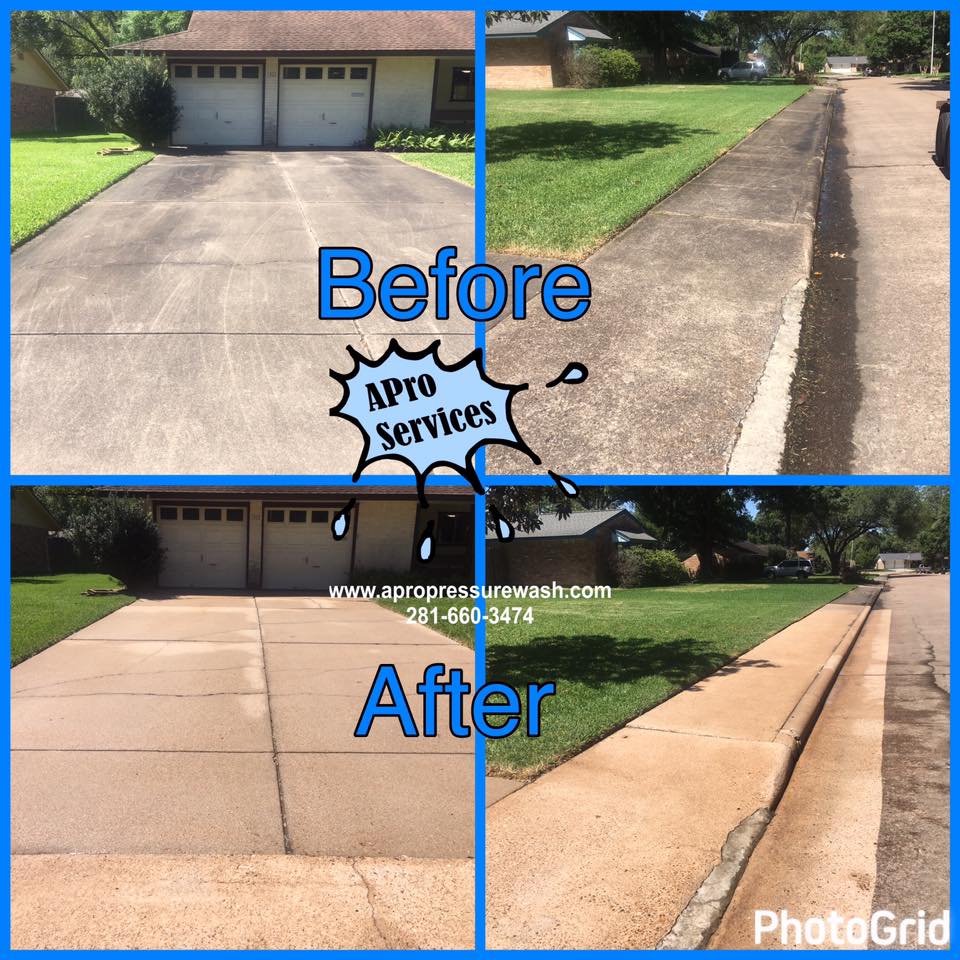Concrete Mold & Mildew: Health Risks You Need to Know
That dark, musty smell emanating from your basement or garage isn’t just unpleasant—it could be signaling a serious health hazard lurking on your concrete surfaces. Recent studies show that nearly 70% of homes have detectable levels of mold, with concrete areas being particularly susceptible due to their porous nature and tendency to retain moisture.
When mold and mildew take hold on concrete, they create more than just an eyesore. These microscopic invaders can trigger respiratory issues, allergic reactions, and even more severe health complications for vulnerable family members. Understanding the risks and knowing how to address them effectively isn’t just about maintaining your property’s appearance—it’s about protecting your family’s wellbeing. At APro Pressure Washing, we’ve seen firsthand how proper concrete cleaning and mold remediation can transform not just the look of your surfaces, but the health and comfort of your entire living space.

Why Concrete Becomes a Breeding Ground for Mold
Concrete might seem like an unlikely host for biological growth, but its porous structure creates the perfect environment for mold and mildew proliferation. When moisture seeps into these tiny pores, it creates dark, damp conditions that fungi absolutely love. Add poor ventilation, organic debris, and fluctuating temperatures, and you’ve got a recipe for rapid mold colonization.
The challenge with concrete mold isn’t just surface-level. Unlike smooth surfaces where mold sits on top, concrete allows spores to penetrate deeply into the material itself. This means surface cleaning alone often fails to eliminate the problem entirely, leading to frustrating regrowth cycles that many homeowners experience.
Recognizing the Health Warning Signs
Mold exposure on concrete surfaces can trigger immediate reactions in sensitive individuals. Common symptoms include nasal congestion, throat irritation, coughing, and eye watering. These reactions occur because mold spores become airborne, especially when disturbed during cleaning attempts or daily activities.
Children and elderly family members face heightened risks, as their immune systems may struggle more with mold exposure. Asthma sufferers often notice worsened symptoms when mold is present, experiencing increased frequency and severity of attacks.
Long-term Health Concerns
Extended exposure to concrete mold can lead to more serious health implications. Some individuals develop chronic respiratory conditions, persistent fatigue, and recurring sinus infections. Certain mold species produce mycotoxins—toxic compounds that can affect neurological function and overall immune system health.
Research indicates that prolonged exposure to indoor mold can contribute to the development of asthma in previously healthy individuals, particularly children. This makes prompt and thorough mold removal crucial for maintaining long-term family health.
Professional vs. DIY Removal: Understanding Your Options
Many homeowners initially attempt DIY mold removal using household bleach or commercial cleaners. While these methods might temporarily improve surface appearance, they rarely address the root cause or eliminate deeply embedded spores. Bleach, in particular, can actually feed certain mold species while creating harmful fumes in enclosed spaces.
Professional mold remediation involves specialized equipment and techniques designed to penetrate concrete’s porous structure. High-powered cleaning systems, antimicrobial treatments, and proper containment methods ensure thorough removal while preventing cross-contamination to other areas of your home.
Prevention Strategies That Actually Work
Effective mold prevention focuses on moisture control and proper ventilation. Installing dehumidifiers in basement areas, ensuring proper drainage around concrete foundations, and addressing water leaks promptly can significantly reduce mold risk. Regular professional cleaning helps maintain concrete surfaces before problems develop into health hazards.
Sealing concrete surfaces with appropriate coatings creates a barrier that prevents moisture penetration while making future cleaning more manageable. This proactive approach often proves more cost-effective than dealing with established mold problems.
Moving Forward with Confidence
Addressing mold and mildew on concrete doesn’t have to feel overwhelming. Professional cleaning services combine the right equipment, knowledge, and safety protocols to restore your concrete surfaces while protecting your family’s health. The investment in proper remediation pays dividends in improved indoor air quality and peace of mind.
Don’t let mold and mildew compromise your family’s health and your property’s integrity. Contact APro Pressure Washing today for a comprehensive assessment of your concrete surfaces and discover how professional cleaning can create a healthier, safer environment for everyone you care about.
